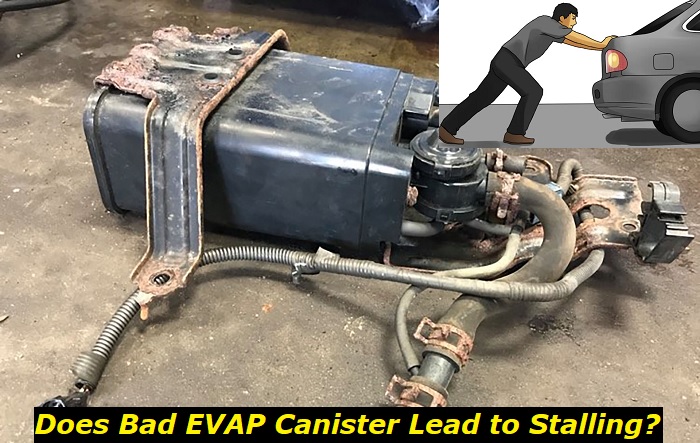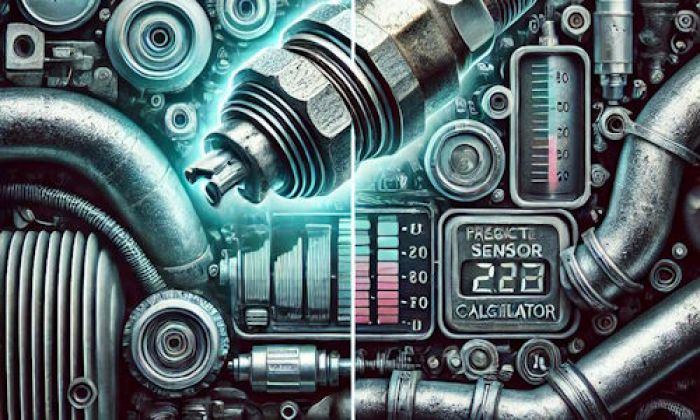If your car stalls frequently, it could be caused by a faulty EVAP canister. While this is not the only potential cause of stalling, it is important to check and address any issues with the EVAP canister. So what is an EVAP canister, and why can it cause stalling? Read on to find out.
Fuel supply problems highlights
- Level of importance:Very high
- Can you drive?Usually, no
- DIY inspection:Possible
- DIY repairs:Mostly,impossible
- Price of repair:$300 - $650
- Commonreasons:Fuel pump, fuel filter, fuel lines, EVAP system, electrical problems
- How to fix:Check the pump, verify it has power, check the fuelfilter

What is an EVAP canister, and what does it do?
The Evaporative Emission Control System (EVAP) canister is a component that captures and stores fuel vapors from the gas tank and sends them to the engine for combustion. So how does the EVAP system actually works? As fuel is used in the engine, vapors are created and stored in the canister. When the engine is running, these vapors are drawn into the combustion chamber to be burned off.
The EVAP canister is the main component of the EVAP system. It is used to store fuel vapors and prevent them from being released into the atmosphere. Usually, it is located near the gas tank. It consists of a plastic container with a charcoal filter inside and has tubes or hoses connecting it to the gas tank and engine. So the problems with an EVAP canister can be either associated with the canister itself or its connecting hoses.
In some cases, a faulty or clogged EVAP canister can cause stalling. This is because the engine may not be receiving enough fuel vapor, leading to an uneven air-fuel mixture. So let's check the most common symptoms of a faulty EVAP canister.
What are the symptoms of a bad EVAP canister, and how do you know if you have one?
- Stalling or rough idling
This can be a symptom of a faulty EVAP canister. You may experience stalling or rough idling because the engine is not receiving enough fuel vapor. Pay attention that if there is your EVAP canister suffers only from minor damage, then you may only experience rough idling. Stalling is more common when the damage is more severe.
- Check engine light may be illuminated
Your vehicle's onboard diagnostic system may detect an issue with the EVAP canister and illuminate the check engine light. It's important to have this checked as soon as possible to make sure that your EVAP canister is not damaged, or that there are no other causes making your check engine light illuminated.
- Failed emissions test
If you fail an emission test, it could be due to a faulty EVAP canister causing excess fuel vapors to be released into the atmosphere. A failed emission test will not only make you waste your time and money on repairs, but it also means that your car is not in the green area of environmental protection.
- Poor fuel efficiency
An issue with the EVAP canister can result in less fuel being effectively burned, leading to decreased fuel efficiency. So if you notice a sudden drop in your gas mileage, it could be a sign of an EVAP canister issue. There are other reasons that may cause a drop in fuel efficiency, including a clogged fuel filter or low tire pressure. Therefore, it is important to check other factors as well before you assume that your EVAP canister.
- Strong gasoline smell
A faulty EVAP canister may result in fuel vapors leaking into the car's cabin, causing a strong gasoline smell. Not only is this unpleasant, but it can also be dangerous. Make sure to have your car checked as soon as possible if you notice a strong fuel smell. Other causes of strong fuel smell include spilled gas, worn-out gas cap, or even a strong air conditioner drain line.
- The fuel tank may not fill completely
If the EVAP canister is clogged or faulty, it may prevent the fuel tank from filling completely. This is because the fuel vapors are not being properly stored and released in the EVAP system.
You may have a combination of these symptoms or only one of them. The key is to get your car diagnosed as soon as possible. If you suspect that the EVAP canister may be causing your stalling issue, be sure to have it checked by a qualified professional ASAP.
Causes of a bad EVAP canister
- Clogs or blockages in the EVAP system, such as a clogged vent valve or canister
When this system becomes clogged or blocked, it can affect the performance of your engine and potentially lead to emissions testing failure. To troubleshoot and fix a clog in the EVAP system, start by checking the vent valve for any debris or blockage. The vent valve is typically located near the gas tank and can easily be cleaned with a rag or replaced if necessary. If the issue persists, it may be a clog in the charcoal canister, which stores fuel vapors until they can be burned off by the engine. This canister should also be cleaned or replaced if necessary.
- Physical damage to the EVAP canister
There are several potential causes for this, including a crash or collision, driving over rough terrain, or corrosion due to exposure to chemicals or weather. This damage can result in leaks and malfunctions in the EVAP system. To prevent physical damage to the EVAP canister, it is important to properly maintain your vehicle and avoid driving in hazardous conditions. It is also important to regularly inspect the canister for any signs of damage or corrosion. If any damage is found, it should be repaired or replaced immediately.
- Faulty components in the EVAP system, such as a faulty purge valve
In some cases, faulty components in the EVAP system can cause vapor leaks. In order to determine if this is the issue, a mechanic will use a smoke test to locate the source of the leak. During this test, smoke is passed through the EVAP system while it's pressurized, helping to identify any leaks. If the leak is identified, it can either be repaired, or the damaged component can be replaced.
- Overfilling your gas tank
Constantly overfilling your gas tank can increase the pressure in the EVAP system, causing potential leaks and malfunctions. Make sure to only fill your tank to the recommended level to prevent damage to the EVAP system. To prevent overfilling, it is also helpful to keep an eye on your gas gauge to avoid any sudden dips that may indicate overfilling.
- Moisture in the EVAP system
Moisture can cause corrosion and damage to the components in the EVAP system. This can result in leaks and malfunctions. To prevent this, it is important to properly maintain your vehicle and make sure any potential sources of moisture, such as a leaky seal or gasket, are repaired promptly.
How to fix a bad EVAP canister
If you suspect that your EVAP canister is faulty, it's important to take appropriate steps as soon as possible. A mechanic will be able to diagnose the issue and determine if the canister needs to be cleaned or replaced or if there are other issues in the EVAP system that need to be addressed. It's also important to regularly inspect and maintain the EVAP system to prevent any potential problems in the future.
In most cases, if you experience any problems with the EVAP canister, it should be replaced. The cost for replacement can vary, but it is generally a fairly inexpensive fix that can prevent further damage and ensure the performance and emissions of your vehicle. You can expect to pay anywhere from $100 to $600 for EVAP canister replacement, depending on the make and model of your car.
How to clean an EVAP canister?
It is not recommended to try to clean the EVAP canister yourself. This is because it requires specific tools and knowledge to properly clean the canister without causing damage. If you have enough skills and knowledge, you can remove the canister and clean it with a special solvent. You can also use an air compressor to blow out any debris or blockages. However, in most cases, it is better to replace the canister to ensure the proper functioning of the EVAP system.
How to replace an EVAP canister?
Replacing the EVAP canister is a job best left to a trained mechanic. In most cases, they will need to lift the vehicle, disconnect and remove the old canister, and then install the new one. They may also need to reset any diagnostic codes in the vehicle's computer system. It is important to make sure that all components in the EVAP system are properly connected and functioning before driving the vehicle.
Bottom Line
Overall, a bad EVAP canister can cause a variety of issues with your vehicle's performance and fuel efficiency. It's important to be aware of bad EVAP canister symptoms and causes and address any issues promptly to avoid further damage. If you are experiencing problems with your EVAP canister, be sure to have it inspected and repaired as soon as possible; otherwise, this can lead to more severe issues with your vehicle.
About the authors
The CarAraC research team is composed of seasoned auto mechanics and automotive industry professionals, including individuals with advanced degrees and certifications in their field. Our team members boast prestigious credentials, reflecting their extensive knowledge and skills. These qualifications include: IMI: Institute of the Motor Industry, ASE-Certified Master Automobile Technicians; Coventry University, Graduate of MA in Automotive Journalism; Politecnico di Torino, Italy, MS Automotive Engineering; Ss. Cyril and Methodius University in Skopje, Mechanical University in Skopje; TOC Automotive College; DHA Suffa University, Department of Mechanical Engineering





Add comment